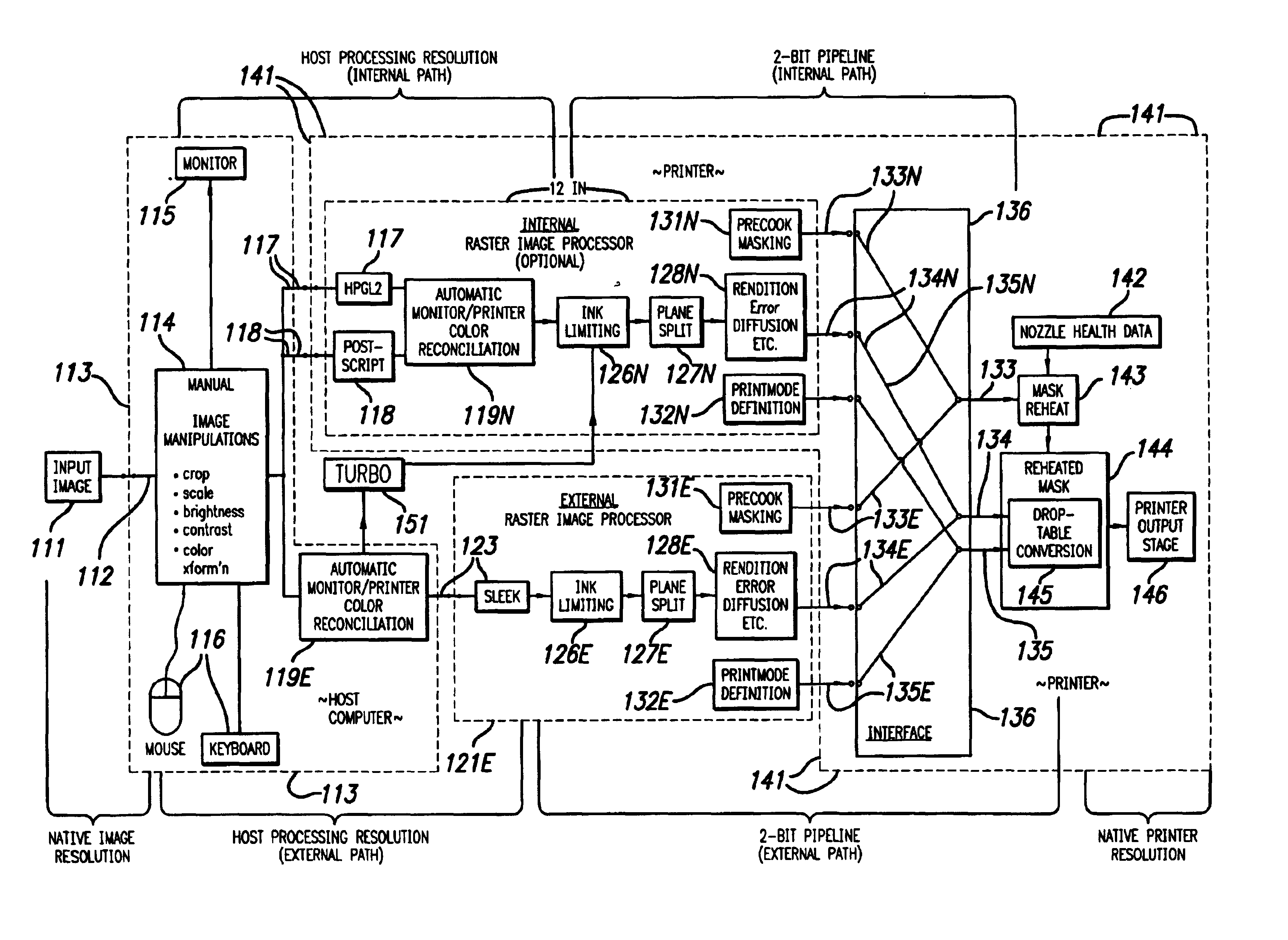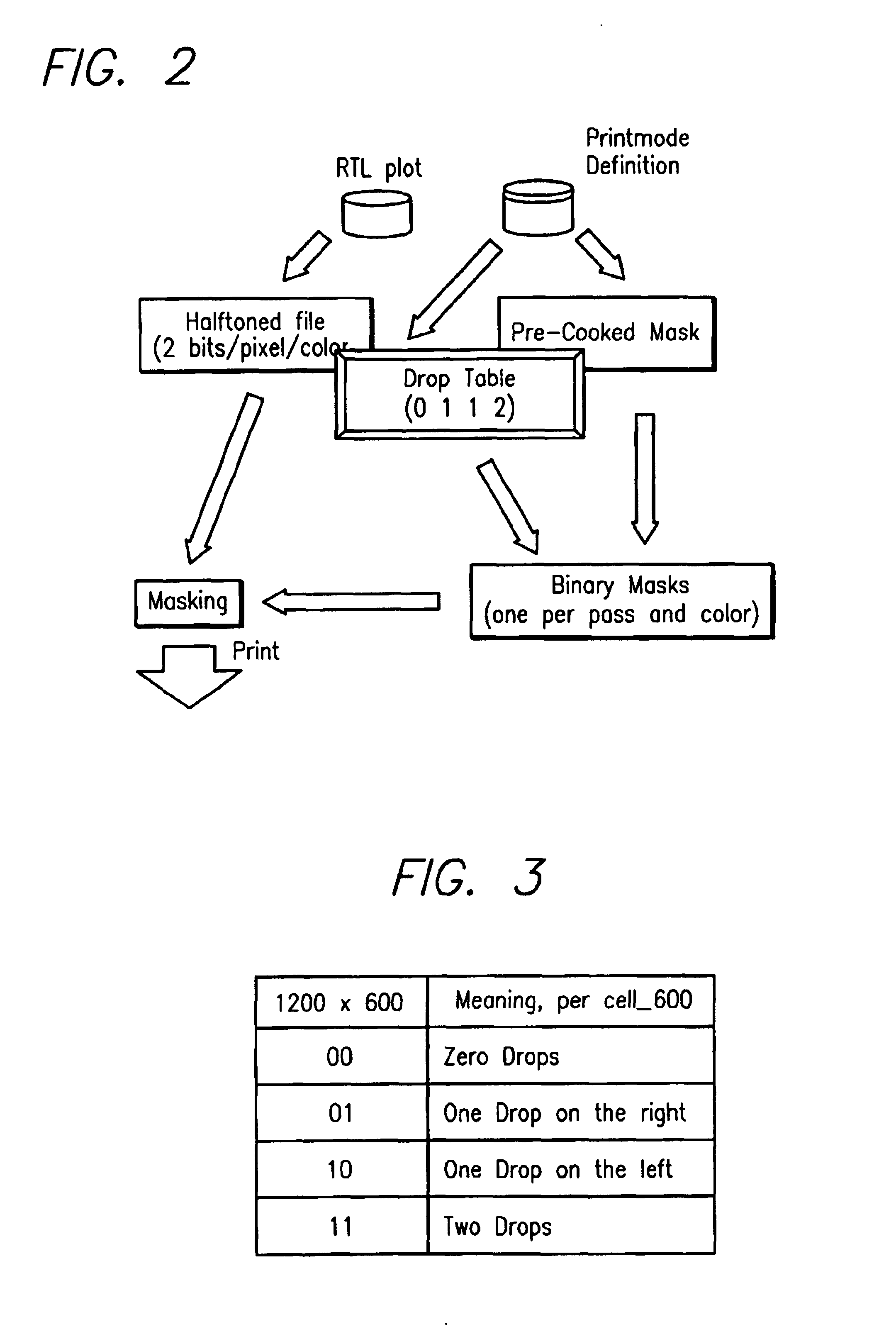Externally customized tonal-hierarchy configuration and complementary business arrangements, for inkjet printing
a tonal hierarchy and business arrangement technology, applied in the direction of digital output to print units, visual presentation using printers, instruments, etc., can solve the problems of uneconomical key personnel of an extremely large manufacturer, unsuitable for major manufacturers of inkjet printers, and exacerbated problems
- Summary
- Abstract
- Description
- Claims
- Application Information
AI Technical Summary
Benefits of technology
Problems solved by technology
Method used
Image
Examples
Embodiment Construction
1. Apparatus-module and Business-entity Interrelations
[0099]Preferred apparatus embodiments of the invention involve three major modules 113, 121E, 141 (FIG. 1), one of which can include an optional internal module 121N. Of these four units, two are parts of the environment of the invention, not elements of the invention itself as most broadly regarded: a computer 113 and an internal RIP 121N.
[0100]The remaining two units are elements of at least some of the previously introduced major apparatus aspects of the invention, again as most broadly conceived. These are the printer 141 (excluding its internal RIP 121N) and the processor or external RIP 121E. In addition, provision of one or the other of these two units 141, 121E is an element of at least one of the major method aspects of the invention.
[0101]Essential to the objectives of any such system or method is existence of an image 111, which may be derived from a separate source and then pass through an entry mechanism 112 into the...
PUM
 Login to View More
Login to View More Abstract
Description
Claims
Application Information
 Login to View More
Login to View More - R&D
- Intellectual Property
- Life Sciences
- Materials
- Tech Scout
- Unparalleled Data Quality
- Higher Quality Content
- 60% Fewer Hallucinations
Browse by: Latest US Patents, China's latest patents, Technical Efficacy Thesaurus, Application Domain, Technology Topic, Popular Technical Reports.
© 2025 PatSnap. All rights reserved.Legal|Privacy policy|Modern Slavery Act Transparency Statement|Sitemap|About US| Contact US: help@patsnap.com



